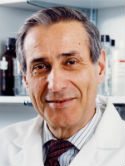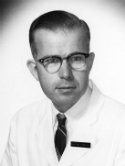Brachytherapy as part of the definitive management of squamous cancer of the base of tongue Journal Article
| Authors: | Harrison, L. B.; Sessions, R. B.; Strong, E. W.; Fass, D. E.; Nori, D.; Fuks, Z. |
| Article Title: | Brachytherapy as part of the definitive management of squamous cancer of the base of tongue |
| Abstract: | Between 1981 and 1986, 17 patients were treated at the Department of Radiation Oncology at the Memorial Sloan-Kettering Cancer Center with squamous cancer of the base of the tongue whose definitive treatment included brachytherapy. The patient sample consisted of 14 men and 3 women with age range of 35 to 71 years (median = 58). There were four patients with T1 lesions, six with T2, six with T3, and one with T4. In general, treatment consisted of 5000-5400 cGy with external beam radiation and 2000-3000 cGy boost to the base of tongue via an Ir-192 implant using afterloading catheters. Necks were managed with elective radiation alone in the NO group (n = 5) or with radiation plus neck dissection in the N+ group (n = 12). Five patients who would have required laryngectomy had they undergone primary surgery received neoadjuvant chemotherapy followed by external beam and implant as part of a larynx preservation study that was being done at our institution (4-T3, 1-T2). The range of follow-up is 8 to 59 months, with median follow-up of 24 months. No patients have been lost to follow-up. Crude local control by T-Stage are as follows: Tl- 4 4, T2- 5 6, T3- 5 6, T4- 1 1. Actuarial local control at 24 months is 87%. There have been no neck failures. There have been five patients who had soft tissue ulceration (STU) and one patient who had osteoradionecrosis (ORN). All soft tissue ulceration patients have been successfully managed conservatively. The patient with osteoradionecrosis is currently being managed. In 4 of these 6 cases, the implant was the initial therapeutic intervention and the entire tumor bed was implanted. On the other hand, when external beam was the initial treatment, the boost was administered to the smaller volume of residual disease. Overall, 4 of 7 patients who had implant first developed either soft tissue ulceration or osteoradionecrosis, as opposed to 2 of 10 patients who had implant after external beam and/or chemotherapy. The numbers are too small to be statistically significant, but our current policy is to perform brachytherapy after the external beam. In addition, all those with either soft tissue ulceration or osteoradionecrosis were implanted with a non-looping technique. Overall, 6 of 12 patients treated with a non-looping technique developed an injury, whereas none of the five treated with a looping technique has developed one. The probability of local control at 24 months is 87%. There have been only two cancer related deaths, and the survival at 2 years is also 87%. Our ongoing experience suggests that radiation with external beam and brachytherapy is a successful treatment for selected base of tongue tumors. © 1989. |
| Keywords: | adult; aged; survival rate; squamous cell carcinoma; carcinoma, squamous cell; cisplatin; methodology; histology; brachytherapy; radioisotope; tongue neoplasms; tongue carcinoma; iridium 192; radioisotope therapy; iridium radioisotopes; intravenous drug administration; middle age; megavoltage radiotherapy; human; male; female; priority journal; article; support, non-u.s. gov't; base of tongue |
| Journal Title: | International Journal of Radiation Oncology, Biology, Physics |
| Volume: | 17 |
| Issue: | 6 |
| ISSN: | 0360-3016 |
| Publisher: | Elsevier Inc. |
| Date Published: | 1989-12-01 |
| Start Page: | 1309 |
| End Page: | 1312 |
| Language: | English |
| DOI: | 10.1016/0360-3016(89)90542-7 |
| PUBMED: | 2599912 |
| PROVIDER: | scopus |
| DOI/URL: | |
| Notes: | Article -- Export Date: 14 April 2020 -- Source: Scopus |
Altmetric
Citation Impact
BMJ Impact Analytics
Related MSK Work








